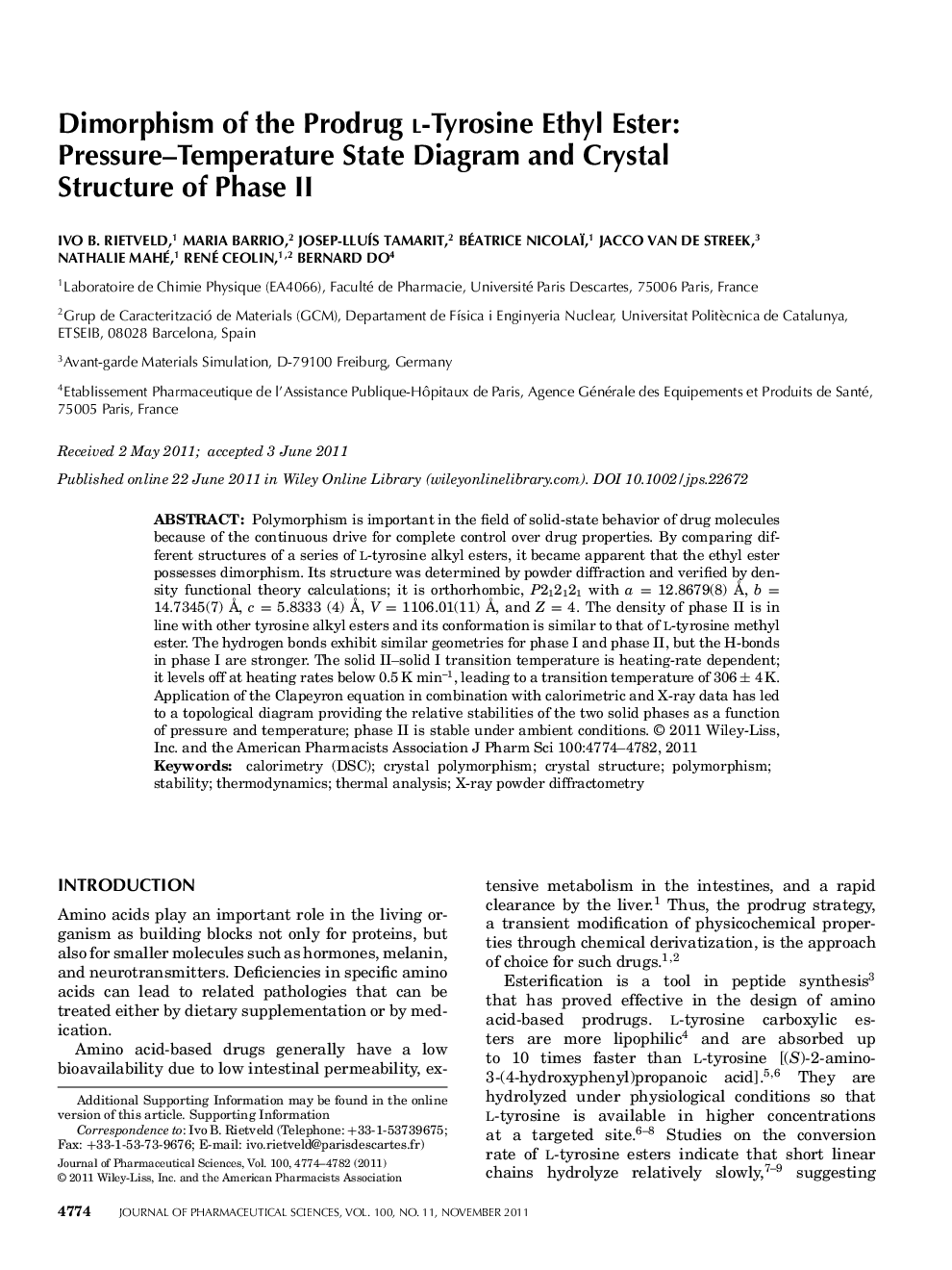| Article ID | Journal | Published Year | Pages | File Type |
|---|---|---|---|---|
| 2486177 | Journal of Pharmaceutical Sciences | 2011 | 9 Pages |
Abstract
Polymorphism is important in the field of solidâstate behavior of drug molecules because of the continuous drive for complete control over drug properties. By comparing different structures of a series of lâtyrosine alkyl esters, it became apparent that the ethyl ester possesses dimorphism. Its structure was determined by powder diffraction and verified by density functional theory calculations; it is orthorhombic, P212121 with a = 12.8679(8) Ã
, b = 14.7345(7) Ã
, c = 5.8333 (4) Ã
, V = 1106.01(11) Ã
, and Z = 4. The density of phase II is in line with other tyrosine alkyl esters and its conformation is similar to that of lâtyrosine methyl ester. The hydrogen bonds exhibit similar geometries for phase I and phase II, but the Hâbonds in phase I are stronger. The solid II-solid I transition temperature is heatingârate dependent; it levels off at heating rates below 0.5 K min-1, leading to a transition temperature of 306 ± 4 K. Application of the Clapeyron equation in combination with calorimetric and Xâray data has led to a topological diagram providing the relative stabilities of the two solid phases as a function of pressure and temperature; phase II is stable under ambient conditions. © 2011 WileyâLiss, Inc. and the American Pharmacists Association J Pharm Sci 100:4774-4782, 2011
Keywords
Related Topics
Health Sciences
Pharmacology, Toxicology and Pharmaceutical Science
Drug Discovery
Authors
Ivo B. Rietveld, Maria Barrio, JosepâLluÃs Tamarit, Béatrice Nicolaï, Jacco Van de Streek, Nathalie Mahé, René Ceolin, Bernard Do,
